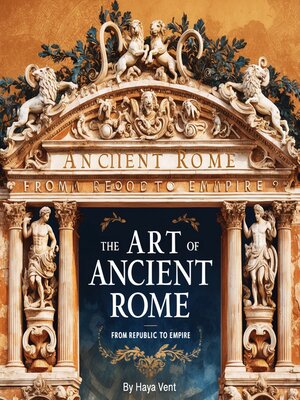
Sign up to save your library
With an OverDrive account, you can save your favorite libraries for at-a-glance information about availability. Find out more about OverDrive accounts.
Find this title in Libby, the library reading app by OverDrive.



Search for a digital library with this title
Title found at these libraries:
| Library Name | Distance |
|---|---|
| Loading... |
The art of ancient Rome stands as a testament to the ingenuity, adaptability, and cultural dynamism of one of history's greatest civilizations. Rooted in a blend of indigenous Italic traditions and foreign influences, particularly from the Etruscans and Greeks, Roman art evolved into a distinctive style that reflected the political, social, and ideological aspirations of the Republic and later the Empire. Unlike the Greeks, who pursued idealized beauty and harmony, Roman artists often focused on realism, practicality, and the glorification of power.
One of the defining characteristics of Roman art is its emphasis on functionality and propaganda. Art was not created solely for aesthetic pleasure but served a broader purpose—whether to commemorate military victories, reinforce social hierarchies, or assert the legitimacy of rulers. This utilitarian approach is evident in public monuments, portraiture, and architectural developments. The use of art as a tool of political messaging became particularly pronounced during the transition from Republic to Empire, when emperors sought to establish their authority through grand visual statements.
A major influence on early Roman art came from the Etruscans, an advanced civilization in central Italy. Etruscan tomb paintings, sculptures, and architectural techniques significantly shaped Roman artistic expression, particularly in the use of terracotta and bronze. However, as Rome expanded and came into direct contact with the Hellenistic world, Greek art became the dominant inspiration. Romans admired Greek sculptures, often commissioning copies of famous works, and integrated Greek motifs into their architecture, frescoes, and decorative arts.






